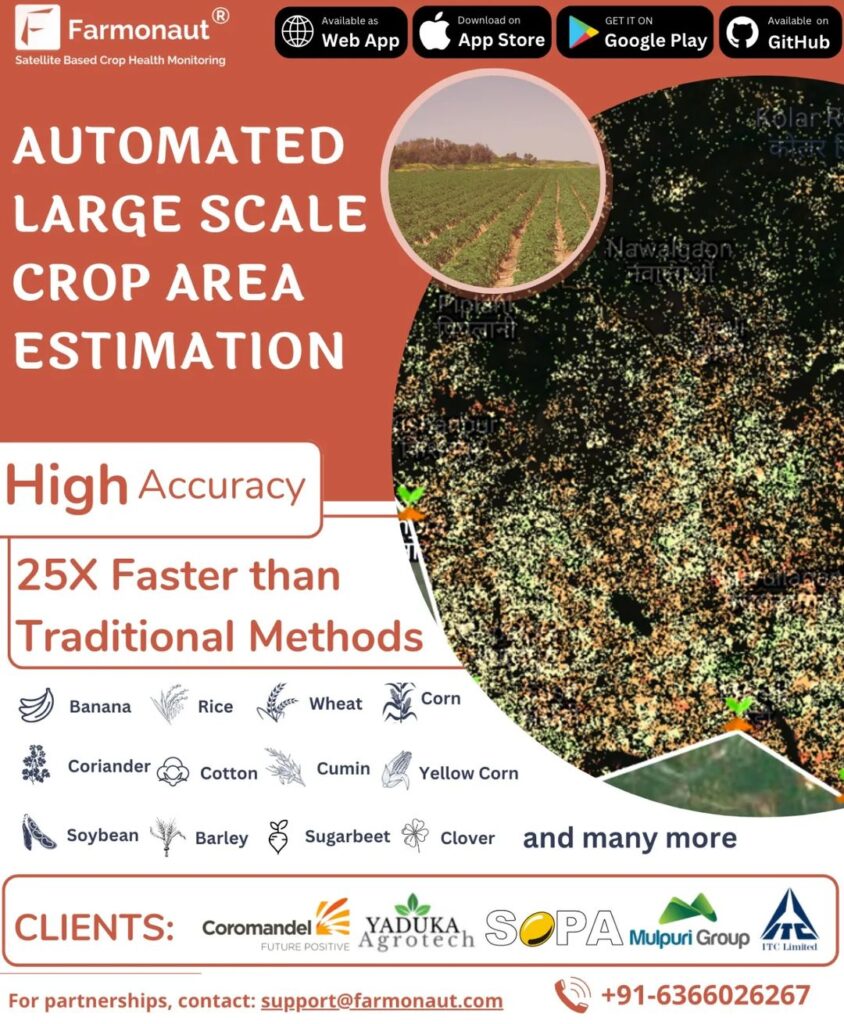Winged Aphids Black: 7 Ways to Prevent Crop Damage
“Aphids can reproduce up to 12 times per season, rapidly increasing crop infestation risks if unmanaged.”
Identification and Biology of Winged Black Aphids
Winged black aphids, a significant concern for agriculture, farming, and forestry, are notorious for their rapid population growth and capacity to damage crops and trees across extensive field areas. Accurate identification and an understanding of their biology are the cornerstones to develop effective aphid infestation control and support integrated pest management strategies.
- Visual Appearance: Winged black aphids are small, darker-colored insects, measuring 2-4mm in length with dark, shiny bodies and wings that enable them to disperse over long distances.
- Winged and Wingless Forms: Aphids occur in both forms. Alates (winged form) spread infestations by flying to new host plants, while apterous (wingless form) mainly colonize and feed.
- Reproduction: Aphids reproduce sexually and asexually. Remarkably, one female can produce dozens of offspring without mating—a process called parthenogenesis. This prolific reproduction means new generations appear in days, not weeks.
- Life Cycle: Several generations can occur each year, with some species reproducing up to 12 times per season. Eggs overwinter on various host plants.
Mastering the identification of these pests is crucial, as their capacity to jump from one host to another—thanks to their wings—means fast spread and rapid escalation of population, making early detection and management paramount.
How Winged Black Aphids Damage Crops and Trees
The impact of winged black aphids on plants ranges from subtle health disruptions to severe crop losses. Let’s break down the various detrimental effects:
- Distorted Growth and Deformation: Aphids use their piercing-sucking mouthparts to extract sap from plant tissues. This persistent feeding weakens plants, causing leaves and stems to curl, distort, or become deformed.
- Sooty Mold and Photosynthetic Loss: Aphids excrete a sticky honeydew that promotes the growth of sooty mold fungi. This blackens leaves and can reduce the photosynthetic efficiency of crops.
- Virus Transmission by Aphids: Aphids are notorious vectors for plant viruses. Through their feeding activity, they facilitate the transmission of various infectious diseases, leading to devastated yields.
- Stunted Growth and Plant Death: Severe infestations can weaken plants, result in stunted growth, and even cause plant death in extreme cases.
- Indirect Economic Impact: The infestation can lead to increased input costs, quality loss, and complications in pest management for farmers, agribusinesses, and forestry managers.
Focus on Prevent Aphid Damage to Plants
Given these myriad effects, it’s essential to adopt integrated management strategies to prevent aphid damage to plants at the earliest indication of presence. Visual signs include:
- Yellowing, curling, or twisted new leaves
- Sticky residue (honeydew) on foliage, branches, or fruit surfaces
- Dark sooty mold patches on plant surfaces
Early Detection and Monitoring Crop Health for Winged Black Aphids
The early detection of aphids is vital for effective pest management. Statistics show that early intervention can reduce aphid-related crop losses by up to 70% using integrated pest management strategies.
But how can we reliably detect the signs of aphids on leaves and intervene before populations surge?
- Field Scouting: Regularly inspect plants, particularly the undersides of leaves, for clusters of aphids or sticky honeydew residues.
- Sticky Traps: Deploy yellow sticky traps around crops to capture winged black aphids—a practical, low-cost method that provides an early warning of infestation.
- Satellite Monitoring: Advances in technology enable satellite-based crop health monitoring. With satellite imagery, we can detect subtle changes in vegetation health—often signaling early pest activity—even before visible symptoms appear.
How Satellite-Based Technology Makes a Difference
At Farmonaut, we offer real-time monitoring of your crop’s health using multi-spectral satellite imagery. By leveraging indicators like NDVI (Normalized Difference Vegetation Index), we help farmers and agribusinesses access timely, data-driven warnings about pest pressure, including signs of aphid presence well in advance.
This landscape-scale monitoring is invaluable for:
- Pinpointing high-risk patches in large farms
- Scheduling targeted scouting in vulnerable zones
- Reducing unnecessary chemical input via precision actions
For developers and businesses, Farmonaut’s Satellite-Weather API and Developer Documentation offer deep integration and real-time crop monitoring tools.
7 Expert Integrated Pest Management Strategies for Winged Black Aphids in Crops
Combating winged black aphid infestations requires a holistic, multi-pronged approach. The best results are achieved using Integrated Pest Management (IPM) Strategies that leverage both natural and technological controls to reduce aphid populations naturally, prevent aphid damage to plants, and sustain crop health.
-
Cultural Control
- Crop Rotation & Diversification: Breaks aphid life cycles and disrupts continuous hosting.
- Plant Spacing & Weed Removal: Allows air circulation, reduces moist microclimates, and eliminates alternative hosts for aphids.
- Sanitation: Remove infested crop debris and surrounding weeds to destroy potential reservoirs.
- Implement using advanced management apps such as large scale farm management tools.
-
Biological Control of Aphids
- Natural Predators: Encourage populations of ladybugs (lady beetles), lacewings, syrphid flies, and parasitic wasps, all of which feed on aphids.
- Habitat Management: Plant blooming border crops to support and attract these predators.
- Companion Planting: Grow plants like garlic and chives, which repel aphids.
-
Physical and Mechanical Control
- Sticky Traps: Install yellow sticky traps to monitor and reduce winged black aphids.
- Water Sprays: Dislodge aphids with a strong stream of water on infested leaves.
- Pruning: Remove and destroy severely infested shoots promptly.
-
Reflective Mulches and Barriers
- Reflective Mulch: Place silver or white reflective mulch between crop rows to confuse and deter aphid alates from landing, especially in vegetables and field crops.
-
Border Cropping and Bankers
- Border Crops: Plant wheat, sunflower, or flowering plants at field margins to attract predators.
- Trap Cropping: Use early sown or highly attractive plants as “sacrificial” hosts, then manage those separately.
-
Chemical Controls (As a Last Resort)
- Judicious Insecticide Use: Apply targeted, aphid-specific insecticides only if necessary. Choose products with minimal harm to beneficial species and observe resistance management principles.
- Integrate these applications into data-driven practices using monitoring solutions, like those built into Farmonaut’s platform.
-
Continuous Monitoring and Data-Driven Decisions
- Remote Sensing and Alerts: Harness satellite, drone, or AI-based data to identify emerging “hotspots” before outbreaks escalate.
- Monitor your environmental impact while enhancing pest control—a step toward more responsible, sustainable agriculture.
These integrated pest management strategies—when combined and tailored to your environment—maximize pest suppression, promote crop health, and reduce aphid populations naturally.
“Early detection can reduce aphid-related crop losses by up to 70% using integrated pest management strategies.”
Comparative Table: 7 Winged Aphid Management Solutions
| Strategy Name | Estimated Effectiveness (%) | Ease of Implementation | Estimated Cost | Environmental Impact | Description / Application Tips |
|---|---|---|---|---|---|
| Cultural Control | 60-70% | Easy | Low | Low | Crop rotation, weeding, and spacing disrupt aphid lifecycles. Remove plant debris after harvest. |
| Biological Control | 50-80% | Medium | Low-Medium | Low | Encourage ladybugs, lacewings, and syrphid flies. Plant flowers to attract natural enemies. |
| Physical/Mechanical | 40-60% | Easy | Low | Low | Hand removal, sticky traps, high-pressure water sprays, and pruning infested parts. |
| Reflective Mulches | 30-50% | Medium | Medium | Low | Lay reflective film between rows; best for high-value vegetables and transplants. |
| Border Crop/Trap Crops | 40-70% | Medium | Low-Medium | Low | Sow wheat/sunflowers at the field edge to promote predator buildup and intercept aphids. |
| Chemical Controls | 85-95% | Hard | Medium-High | Medium-High | Reserved for severe cases. Use targeted, aphid-specific products judiciously to avoid resistance and protect beneficials. |
| Continuous Monitoring/Data Driven | 60-80% | Easy-Medium | Low-Medium | Low | Use satellite, AI, or drone tech (e.g., Farmonaut) for timely intervention and resource optimization. |
How Farmonaut Assists: Advanced Pest Monitoring and Crop Health Tools
Modern agriculture and large-scale farming require more than manual field scouting. At Farmonaut, we are committed to making precision agriculture affordable and accessible globally—empowering farmers and agronomists with real-time, data-driven pest management and crop health insights for smarter decisions.
- Satellite-Based Crop Health Monitoring: Multispectral satellite imagery enables detection of stress, growth stages, and pest-influenced anomalies across vast tracts of land—all from our Android, iOS, and Web Apps.
- Jeevn AI Advisory System: Our AI delivers personalized pest management and crop protection advice, analyzing weather, crop, and satellite data for every field.
- Blockchain-Based Product Traceability: Enable complete supply chain transparency, reassuring buyers of product origin and food safety risk management, especially when aphid or pest outbreaks threaten regions.
- Resource, Fleet & Carbon Management: Reduce environmental impact while monitoring for pest issues using carbon footprint tracking and fleet management tools to optimize field operations during critical periods like pest outbreaks.
- Agri-Finance Support: Our Crop Loan and Insurance toolkit uses satellite verification to improve farmer access to financial support during pest-induced losses.
All our core solutions are available via API for seamless integration into agribusiness and research systems.
API Access | Developer Docs
Preventive Measures and Natural Ways to Reduce Aphid Infestations
Preventing aphid infestations is often more sustainable and cost-effective than managing established outbreaks. Here’s how to adopt proactive, environmentally-friendly habits that make a substantial difference in the overall health of your crops and trees:
- Sanitation: After harvest, remove all old plant material and weeds in and around production areas. This reduces overwintering sites and alternative hosts.
- Reflective Mulches: Use reflective plastic mulches in vulnerable crops (especially vegetables) to deter winged alates—this significantly reduces virus transmission by aphids.
- Healthy Plants and Nutrition: Keep plants vigorous with balanced nutrition (not excess nitrogen), so they can better withstand aphid feeding.
- Companion Planting: Incorporate herbs like garlic, onion, and chives to naturally repel aphids and confuse their host-seeking behavior.
- Border Crops/Banker Plants: Establish strips of wheat, sunflower, or flowering species along field margins to attract and support beneficial predators.
- Prudent Entry Into Fields: When monitoring or harvesting, avoid moving from infested to clean areas to prevent aphid spread on equipment or clothing.
- Continued Monitoring: Leverage mobile-friendly monitoring/notification platforms (like our Farmonaut mobile and web apps) for fast field health checks and guidance.
For forestry, similar sanitation and border planting measures are vital to defend young tree plantations, where even small aphid populations may cause years of stunted growth.
Frequently Asked Questions (FAQ) – Winged Black Aphids & Crop Damage Prevention
What are the signs of aphids on leaves in my crop field?
Look for clusters of small, dark insects along the undersides of leaves and young shoots, sticky honeydew residue, sooty black mold patches, and leaves that curl, distort, or become deformed compared to healthy growth.
How can I reduce aphid populations naturally in my farm?
Adopt biological control by encouraging natural predators (ladybugs, lacewings, syrphid flies), improve field sanitation, plant trap/border crops, utilize reflective mulches, and monitor for early detection with reliable crop health monitoring tools.
Are chemical controls safe for aphid management?
Use chemical insecticides as a last resort and only when infestations are severe. Prefer targeted, aphid-specific products, and always follow manufacturer/lab safety instructions to protect beneficial insects and limit resistance.
What role do satellite-based tools play in aphid infestation control?
Satellite crop monitoring platforms like Farmonaut analyze health indicators over time, highlighting locations of likely aphid stress or activity—helping direct scouting, reduce blanket chemical usage, and inform timely interventions.
How often should I scout my fields for possible aphid activity?
Weekly scouting is recommended during vulnerable crop stages (emergence, flowering, fruiting). Increase frequency when risk is high, such as after periods of mild, wet weather favoring aphid outbreaks.
Does Farmonaut sell chemicals or farm machinery?
No. Farmonaut is not a marketplace or machinery manufacturer. Our mission is to provide advanced technological solutions (satellite monitoring, AI advice, resource tools) that empower data-driven pest management for modern farmers worldwide. We do not sell inputs or equipment.
Where can I access Farmonaut’s pest monitoring features and advanced APIs?
Access through our web and mobile applications or via the Farmonaut API and developer docs.
How does Farmonaut’s crop loan and insurance service benefit growers during aphid outbreaks?
With satellite-based crop verification and objective damage assessment, farmers benefit from reduced fraud, better access to loans or payouts when losses from aphid outbreaks occur.
Conclusion: Integrated Solutions for Winged Black Aphid Risk Management
Winged black aphids are a significant concern for agriculture, forestry, and farming due to their rapid population growth and ability to deliver widespread damage via both direct feeding and virus transmission.
A vigilant combination of early detection, robust integrated pest management strategies, and proactive preventive measures is vital to minimize their impact and protect crop health. Regular scouting, encouraging natural predators, using mulches, and harnessing advanced technology—particularly satellite-based monitoring and AI—are essential layers to an effective protection system.
At Farmonaut, we remain dedicated to empowering farmers and agribusinesses worldwide with tools to monitor fields, predict risks, and reduce pest-related losses—all in a cost-effective, scalable, and sustainable manner.
Stay vigilant. Act early. Harness technology. Protect your crops and trees for a more productive, resilient future in agriculture.
Farmonaut Subscription Options
Ready to take your crop, farm, or agribusiness to the next level with real-time crop health monitoring, advanced pest alerts, and actionable management insights? Explore Farmonaut’s flexible, affordable subscription plans below. Whether you manage a smallholder plot or vast plantations, our modular platform scales with your needs.
Discover how Farmonaut can transform your field management, pest control, finance, and supply chain tracking—ensuring that your management of aphids and all key agricultural threats is precise, sustainable, and future-ready. For more details, try our free demo today!













